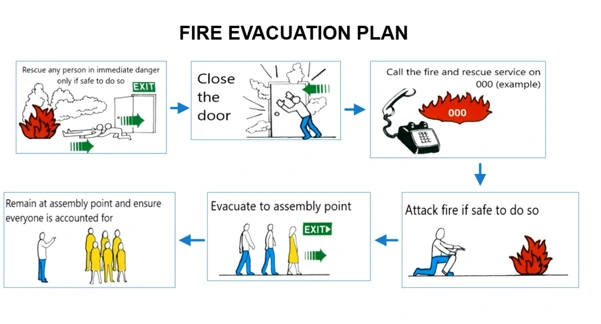Every educator dreams of crafting eLearning experiences that truly resonate with learners, delivering maximum impact and lasting knowledge. While each course boasts unique content and pedagogical approaches, the most successful ones share a common DNA: the strategic integration of essential eLearning elements.
Think about it – what makes an online course truly click? Often, it’s the level of interactivity that keeps learners engaged, the immersive scenarios that bring concepts to life, and the intuitive navigation that ensures a seamless journey.
These aren’t just buzzwords; they’re the building blocks of effective online learning, and their widespread adoption is no accident. Speaking of tools that empower you to weave these crucial elements into your courses with ease, look no further than ActivePresenter. This comprehensive eLearning authoring software provides a robust suite of features designed to create engaging interactive content, build realistic scenarios, and implement user-friendly navigation, making it an invaluable asset in crafting truly effective eLearning experiences.
Curious to understand why these elements are so vital? Keep reading to discover the secrets behind their power to transform online learning.

Want to create eLearning courses packed interactive elements just like this?
Download ActivePresenter for free today and see how intuitively you can build your own engaging learning experiences!

Interactivity
First and foremost, interactivity plays an important role in designing eLearning courses. Unlike traditional learning where learners are in a face-to-face situation, eLearning provides wider environment with interactive objects to engage learners better. There are four levels of interactivity in eLearning, namely No Interaction, Limited Participation, Moderate Interaction, and Full Immersion. These levels contain different types of interactivity which range from basic one like links to images, graphics in No Interaction to complicated one like simulations or games in Full Immersion. The higher level of control over an eLearning course learners have, the higher level of interactivity the course is at. Interactive elements have been proven to not only help engage learners but also enhance their achievements in learning.

Listed below are some important elements of interactivity in eLearning.
Multimedia
The most common interactive elements we often see in every eLearning course are clickable images, graphics, videos and animations. These multimedia mediums can help to bring course content to life. For example, an infographic provides visual representations of information. If a picture is worth a thousand words, then a graphic or a video would be worth a million. A research showed that humans have a remarkable ability to remember images better than words. And learners will understand the course better if animations are added to the portions of the infographic.

Simulation
Apart from multimedia, simulation is also an element coming in handy when you need to express a typical process or procedure to learners. Simulation is the imitation of the operation of a real-world process or system which promotes learning by doing. Therefore, learners can practice doing tasks step by step in a risk-free environment instead of or before doing that in risky real-life situations like an earthquake escape or a fire evacuation.

Gamification
The third interactive element is gamification. It is now becoming an increasing trend in eLearning because of boosting learners’ engagement and inspiration. eLearning adopts key factors in games like points, badges and leaderboards to build motivation, excitement and competition among learners. Learners can also experience “fun” even while learning. This may lead to an increase in the scope of retention for learners. Several games such as “Spin the wheel”, “Millionaire quiz” and “Treasure Hunt” would be a big hit with learners.

Test & assessment
It will be a big mistake if your eLearning courses are lack of tests and assessments. This is an essential eLearning element to engage learners through testing them on what they have learnt in the course. Quizzes are great ways to measure learners’ performance, provide feedback and let them know whether they can move on within the course or return to the previous activities to review the knowledge. There are various types of questions for you to choose from like True/False, Multiple Choice, Multiple Response, Fill in Blank, Drag-n-Drop, Sequence question, and more when you need to build a test with interactive quizzes and assessments for your eLearning course.

Essential eLearning Element: Scenario
In addition, Scenario immerses learners in real-life situation that allows them to gain knowledge or improve their skills, then apply them later outside the learning environment. For instance, when you train staff up on a new product, you will apply basic scenario to turn the content to life. This will motivate learners to gain knowledge related to a real-life context, rather than just giving them simple facts. Moreover, it’s very important to give learners a comprehensive look at the course content before they are diving in. The reason is that scenario allows learners to know what knowledge they will gain after the course and whether that course meets their needs or not.

Navigation
Finally, an essential element that every eLearning course must have is navigation. Your eLearning course should be well designed and intuitively navigated so that learners will be able to follow the content without getting confused or lost any information. Hence, while designing an eLearning course, it is significant to make learners feel that they have control over their learning. For example, they have opportunities to skip a specific part of the course, to access or download additional documents.

Conclusion
Now that you have learnt some of the significant elements often used in eLearning courses. Each course is unique. So, you should choose elements that are the most suitable for your course to fit the needs of the learners. If you want to have a tool to pratice building your eLearning course, why not explore ActivePresenter? You can download for free and start bringing your interactive eLearning ideas to life right away.
